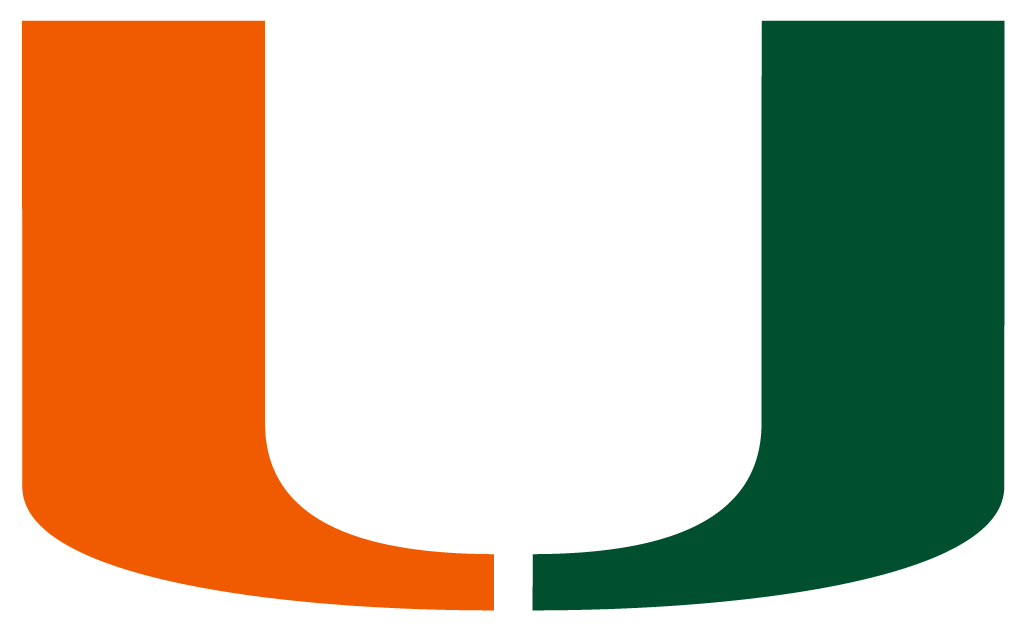
Building Community: Courts for Kids
CORAL GABLES, Fla. – Wesley Bissainthe figured there would be challenges.
After all, building a basketball court from scratch couldn’t be easy. And he and his teammates had been told they could expect tough conditions when they arrived in the small town of Cabezu, a community of about 150 families living in the eastern Dominican Republic.
But it wasn’t until he, defensive lineman Akheem Mesidor, defensive back Daryl Porter, Jr., and running back Terrell Walden II actually laid eyes on the muddy, rock-filled patch of land they would be transforming that Bissainthe truly grasped the scope of the project ahead of them.
“I knew going there it was going to be tough and it was definitely something different, something I’m not used to,” Bissainthe said. “But it definitely took me out of my comfort zone.”
Unfazed by what they encountered, Bissainthe and the Hurricanes – who were joined in the Dominican Republic on the trip put together by the Courts for Kids charitable organization by football staffers Jorge Baez, Reggie Bain, Justin Fitzpatrick and Eli Heatley – put their heads down and got to work.
For six days, they cleared rocks, mixed cement and battled the elements, which ranged from tropical downpours to blistering temperatures.
And when they finished at the work site, they’d head back to the local church where they were staying, scarf down some dinner and spend time playing Uno, Monopoly or dominoes before calling it a night and sleeping on air mattresses that, more often than not, needed to be re-inflated daily before doing it all again the next day.
It was a grueling experience, but one that ultimately proved rewarding beyond measure.
“The experience was definitely out-of-body, but I loved everything about it. I loved connecting with the community and the kids. I loved learning a new language. I loved learning about their culture and sharing our culture as well,” Walden said. “It was definitely hard work. It was definitely difficult and definitely different, but the thing is, while some people might shy away from things that are different, we embraced it. We embraced every part of it as a group and tried our hardest to get that court finished and we did.”
While the Hurricanes spent a little more than a week in the Dominican Republic working on the court and connecting with members of the local community, their efforts began long before their flight departed Miami International Airport in early May.
Because classes were still in session and final exams were still being administered when they left for the Caribbean, Bissainthe, Mesidor, Porter and Walden had to ensure their academic responsibilities were taken care of before their trip.
To that end, the group worked with Miami’s academic advising staff and their professors to complete assignments before they were due and, in some cases, even took their exams ahead of schedule to ensure they could make the trip.
That support from the University, Walden said, made a world of difference.
“For me, I had to move a lot of my finals around. As a pre-law student, our finals are not really flexible. … But my teachers were gracious enough to let me take my finals early so I could get them out of the way and be able to go on the trip,” the running back said. “That support meant a lot. As a student-athlete, it’s always a blessing to be able to reach out to another community and help. My professors saw that in me and gave me the opportunity to do my finals early so I could go help these people.”
It wasn’t just Miami’s academic advising team and faculty that helped the Hurricanes prepare for their life-changing trip.
The Hurricanes’ equipment room, led by Director of Equipment Operations Sam Nichols, made sure the team traveling to the Dominican Republic had the appropriate shoes, gloves and gear to do the necessary construction work on the court.
Meanwhile, Katie Kassel, Miami’s Director of Football Nutrition, made sure the team had enough healthy food to ensure none of the four student-athletes on the trip lost any of the gains they’d made during the Hurricanes’ off-season training program. And Adam Bennett, the football team’s head athletic trainer, packed a kit with first-aid supplies that came in handy while the players and staff were in the Dominican Republic.
“I’m so proud of the University of Miami, that I work at the University of Miami because of everything everyone did to make this trip happen,” said Baez, the football program’s Director of Player Development. “When things became kind of gray, the University of Miami stepped up and was like, ‘Hey, we’ll fill in. We’ll get this done.’”
Added Walden, “It wasn’t just us that built that court. It was everyone from the equipment staff to the operations staff, to the creative team and nutrition. Of course, it was just the eight of us that went, but the whole organization did this together.”
While some members of the football support staff provided help from a distance, two – Fitzpatrick and Heatley – were more hands-on.
The two members of the football program’s creative team traveled with Bissainthe, Mesidor, Porter, Walden, Baez and Bain to document the efforts that went into building the basketball court.
But it didn’t take long for Fitzpatrick and Heatley to put down their cameras and begin pushing wheelbarrows themselves to help make the court a reality.
“It was just really, really rough conditions and the biggest thing for us was making sure the court was finished,” said Fitzpatrick, the football program’s Creative Director. “We were like, ‘You know what? We can only get so much footage of guys lugging cement and pushing wheelbarrows, so we might as well get out there and do it, too. Everybody was working. Everybody was so wet and so dirty; I couldn’t just sit there and take pictures. I just couldn’t do that. So, yeah, we got in there and started working.”
Added Heatley, Miami’s Associate Director for Creative Services, “We didn’t just want to be those guys with cameras. … We wanted [the student-athletes] to know we were in there with them. We’re not just there to show them struggling and forcing them to be happy in front of a lens. We wanted to show them with everything they were doing, we were willing to go through it with them and I’m really proud of them. They went out there and a few of them maybe didn’t even know what they were getting into. But they went out there and did it, got involved with the community, smiling, dancing, having fun with the kids and the adults. No matter how tough the work was, they were still happy and willing to keep going.”
That willingness to keep going, even through all the challenges they encountered, meant that by week’s end, the court was finished and so, the Hurricanes spent their final day in the Dominican Republic connecting with the children in the community.
They visited a local school where there were races, baseball games and heart-to-heart conversations that made a lasting impact. Even after returning to Miami, several of the players – including Porter – have continued to chat with some of the youngsters they met in the Dominican Republic via FaceTime.
It was, for all the players and staff who made the trip with Courts for Kids, an experience that won’t be forgotten anytime soon. And the hope is that the court they built will give the community of Cabezu something to enjoy for years to come.
“It was amazing, just seeing how hard [the community] worked with us,” Bissainthe said. “They were working with no shoes on, no shirts on. But they worked so hard, and they wanted that court so bad. They knew they were going to be playing on it all the time, so everybody in that community took part in it and they worked on it every day with us like their lives depended on it.”
Said Walden, “Even though there was a language barrier, we did have translators with us, so we tried to give [the children] as much wisdom as we could in that short amount of time. And just something as small as playing ball with them, they had such gratitude. They appreciated everything. That’s one reason I loved doing it. They appreciated it so much. It’s uncommon. People don’t usually come there and do that for them. I’m glad I was able to do it.”






